6 things to know about Minami Takayuki, the creative director beyond Graphpaper and FreshService
In the first part, we asked about Takayuki Minami's core businesses - Graphpaper, FreshService and alpha PR. In the second part, we will focus on his "other" work and the background of how his unique aesthetic sense was born.
4.Takayuki Minami as a buyer
Alongside the original items, the Graphpaper and FreshService store feature a range of selected brands, as well as tableware, interior products and works by artists that Minami has collected both in Japan and internationally. What are the differences in the way he selects each item?
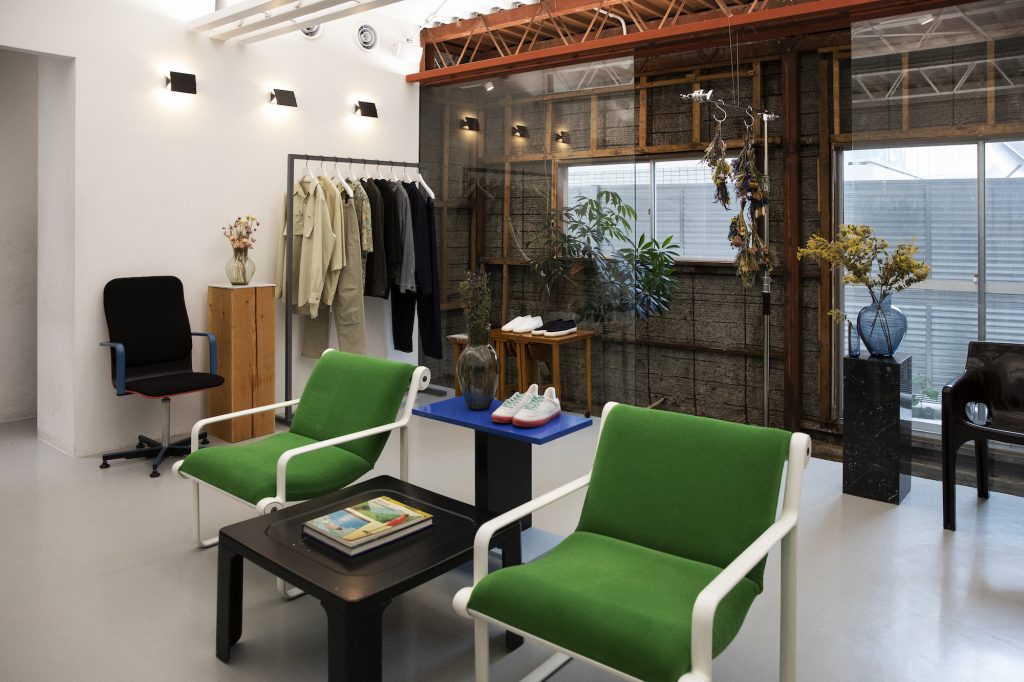
“True buying”
- At the FreshService store, there are industrial items, but also lifestyle goods and ceramics curated by Minami-san. It's the same with the Graphpaper store, but how do you distinguish between the different selections?
Minami: The FreshService Headquarters (in Jingumae, Tokyo) is built like a house, so I place things that suit each room, but I try to find products that are as anonymous as possible. Anonymous stuff and that are I find good. On the other hand, the difference is that Graphpaper has things that you can tell who made them.
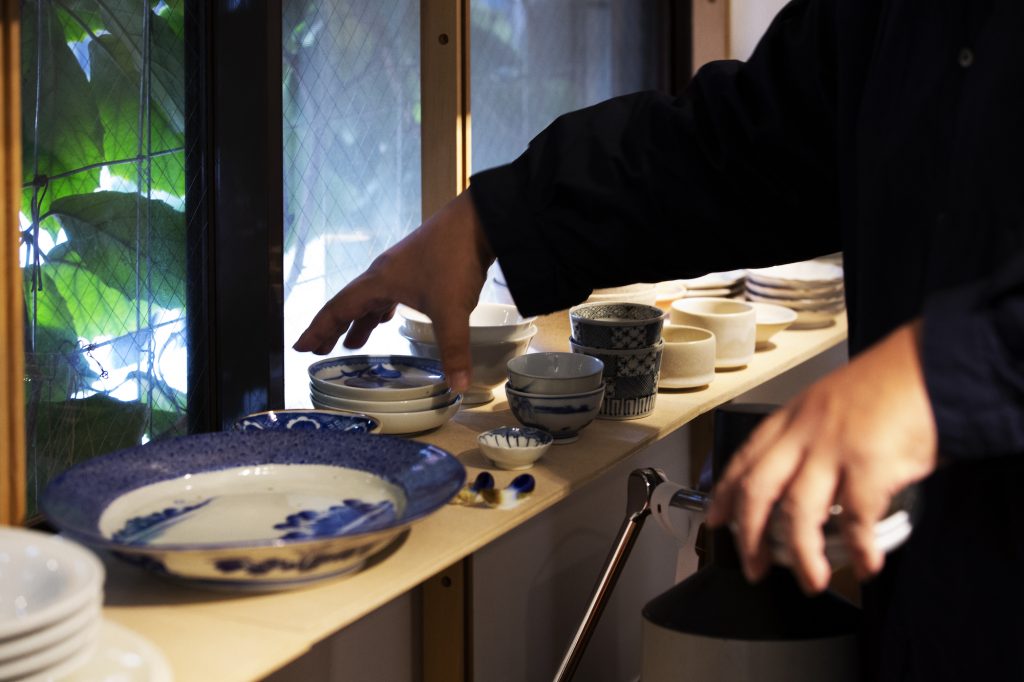
- You used to say that you don't go buying trips overseas very often, but you go abroad for buying these days.
Minami: I used to say 'I don't go abroad to do buying' because I didn't like buying for fashion. Even if you go to a famous brand's showroom in Paris and do a buying while they serve you tea (laughs), our discretion doesn't really work and it doesn't make much of a difference. On the other hand, buying from a place like a junkyard or a venue the size of the Tokyo Dome is tough, and sometimes there are price negotiations that make me nervous, but I rather enjoy it.
- I see.
Minami: I think this is what true buying is all about. You go to a place where you don't know what's there and you do the research by yourself, and you get something amazing, or something that doesn't mean anything to other people but is really cool to me. It's the same whether it's overseas or in Japan.
5.Takayuki Minami as 'outsourced branding director'
Another facet of what we know about Takayuki Minami is his work as a director of other fashion brands and shops, as well as products and services that are not related to fashion. In particular, his project with Ogawa Coffee in Kyoto is gradually creating a big vortex.

- How many projects do you currently work on as an outsourced branding director?
Minami: There are a lot of projects that are finished by the time they are delivered, and the ones I'm currently working on are Ogawa Coffee, loomer, a house in Shiga and the interior direction of a beauty salon in Osaka. I think the only one I'm doing on an ongoing basis is Ogawa Coffee at the moment. I can't do five or six different projects at the same time.
- How did it all start working with Ogawa Coffee?
Minami: I'm such a coffee lover that I've been drinking it since I was in kindergarten in the first place (laughs). When I was doing some research, I found out that Ogawa Coffee in Kyoto is a great coffee shop, so I wanted them to open a shop in Hibiya Central Market for the opening. But they were also reviewing their existing shops at that time. After that, they decided to open a shop in Tokyo, so I started working with them on the OGAWA COFFEE LABORATORY in Sakura Shinmachi and Shimokitazawa in Setagaya.
- What is the great thing about Ogawa Coffee?
Minami: Ogawa Coffee is a company that can make everything from small cars to F-1 cars if you compare them to an automotive manufacturer. So I thought it would be better to do the F-1 side for the new opening shops in Tokyo. For the Kyoto shop, the theme was how to update the coffee culture that Ogawa Coffee has cultivated in Kyoto for 70 years.
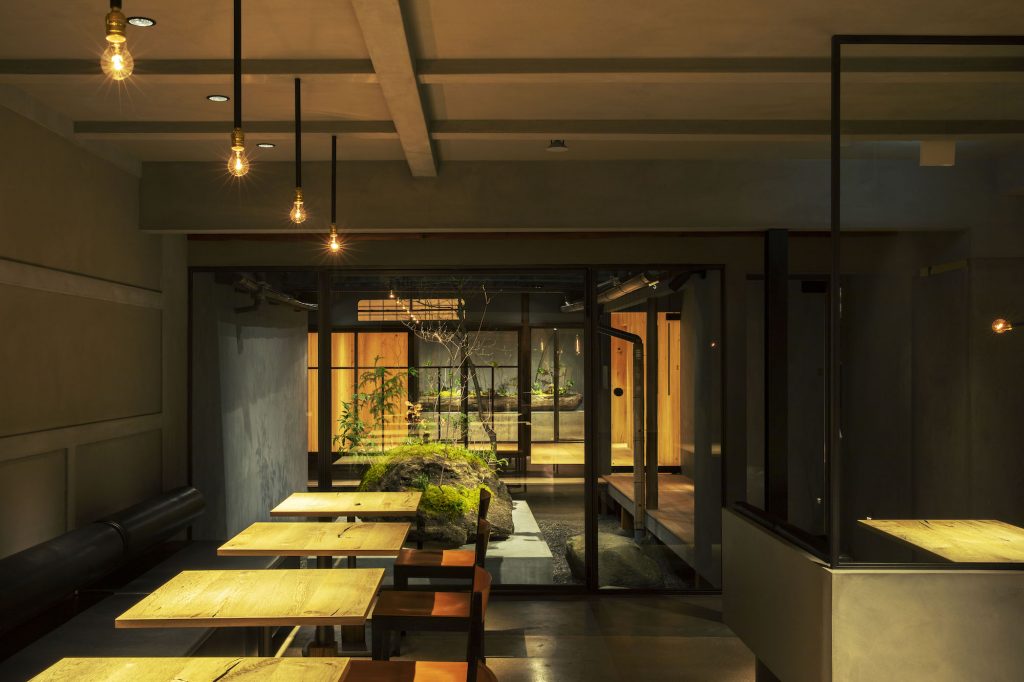
- Did you come up with most of the project content?
Minami: It wouldn't be fun if I did everything on my own, so I asked a lot of people to get involved. I think it was tough for everyone, but I think it was tough for Ogawa Coffee too (laughs).
- What is unique about the Kyoto shop is that it is dedicated to the theme of '100 years'.
Minami: Kyoto has a 100-year history of coffee, and Ogawa Coffee is one of the pioneers. In Kyoto, many companies have been in business for 500 years, so people often say it's ‘only’ 70 years and so on but if it lasts 100 years, we can think about the next 100 years.
- So that's what ‘100 years’ means.
Minami: Then the question arises, “What is the essence of this project?" The essence of the coffee, the essence of the building and the space, in the end, we have to think about all the details one by one. That's why we decided not to make it "something that somehow looks cool". The key question we had to ask ourselves was: "Will this really last for 100 years? when deciding everything.
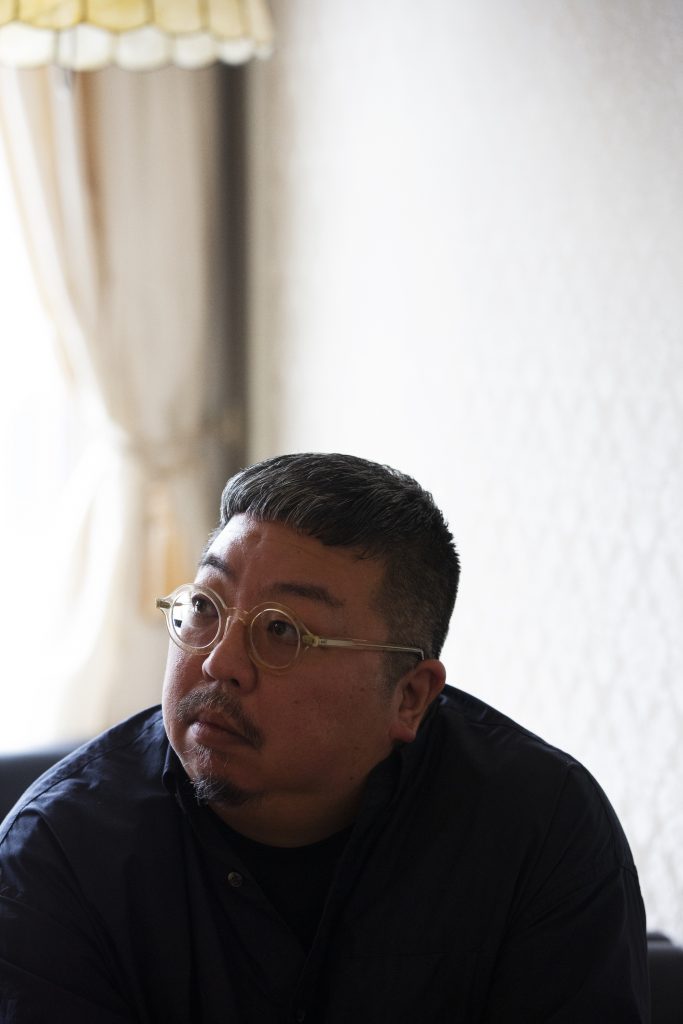
- You come up with ideas that are new things, as well as old and have long history things. How do these ideas come about?
Minami: Hmmm, I wonder why? I've never really thought about it. My style is that I'm not attracted to things that are "very new". I prefer things that have always been there, and if I find a place I like, I go there all the time. Well, it's the same for clothing.
- Maybe that kind of mentality is subconsciously reflected in your work.
Minami: That may be so. But there is no single person in the world who is the same as me, so I believe that if I do things the way I think they will be original.
6.Takayuki Minami as an 'arts and crafts connoisseur'
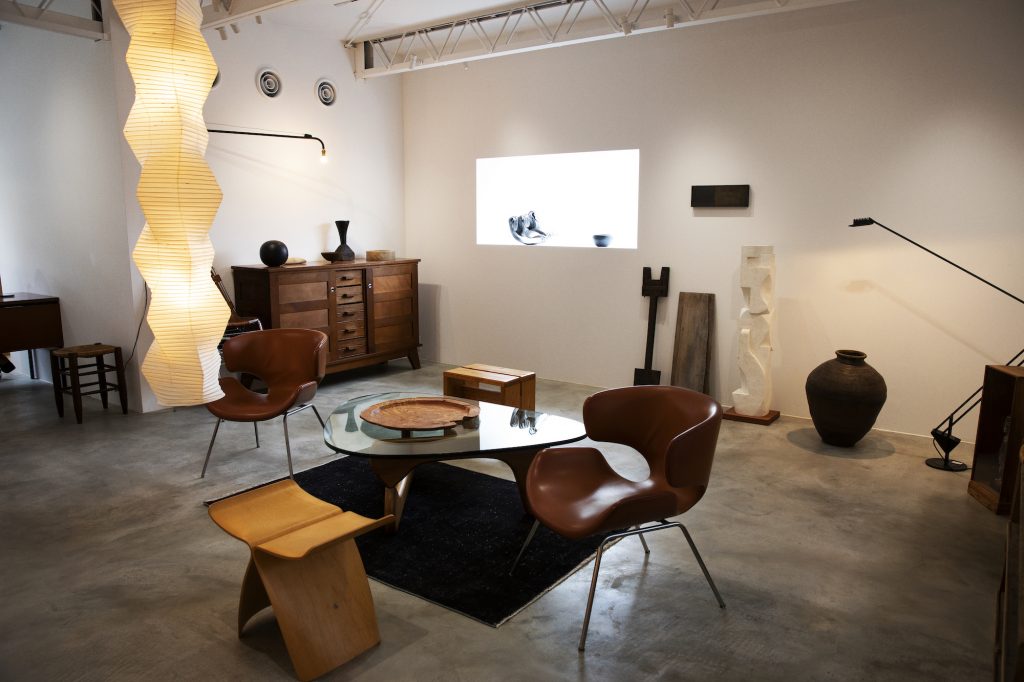
The last thing to get to know about Takayuki Minami is his work as a connoisseur of arts and crafts. He has actively introduced crafts through pop-up events at Graphpaper in the past, and he opened 'Gallery Hakushi' upstairs at Graphpaper Aoyama last year. There, works by both famous and unknown artists are exhibited and sold.
- 'Gallery Hakushi' is mainly for arts and crafts, but how do you find the artists you feature there?
Minami: It depends. Sometimes it's through introductions, sometimes it's a chance encounter, and sometimes I find them on Instagram. There's an artist that took 4 years waiting since I first contacted.
- There seems to be some kind of standard in your mind.
Minami: Well, I’m not very sure. But I don't consider the popularity of the artist at all.
- It's different from a collector saying 'I like this', and I think it's challenging in a way for someone like Minami-san to say something is 'good' as a curator. Sometimes, you might get criticised by someone saying like, "Minami-san, you like this kind of thing".
Minami: I guess I have become numb to that sort of thing. I don't care what other people say at all. I'd rather hear what people say about my selection, whether they're good or bad. I think it's good to keep the number of people who like and dislike me and my creations at about 50-50. If 70% or 80% of the people say they like it, I think that's kind of bad. I think it's better to start from the point where people dislike it, but gradually begin to like it, so that it lasts longer.
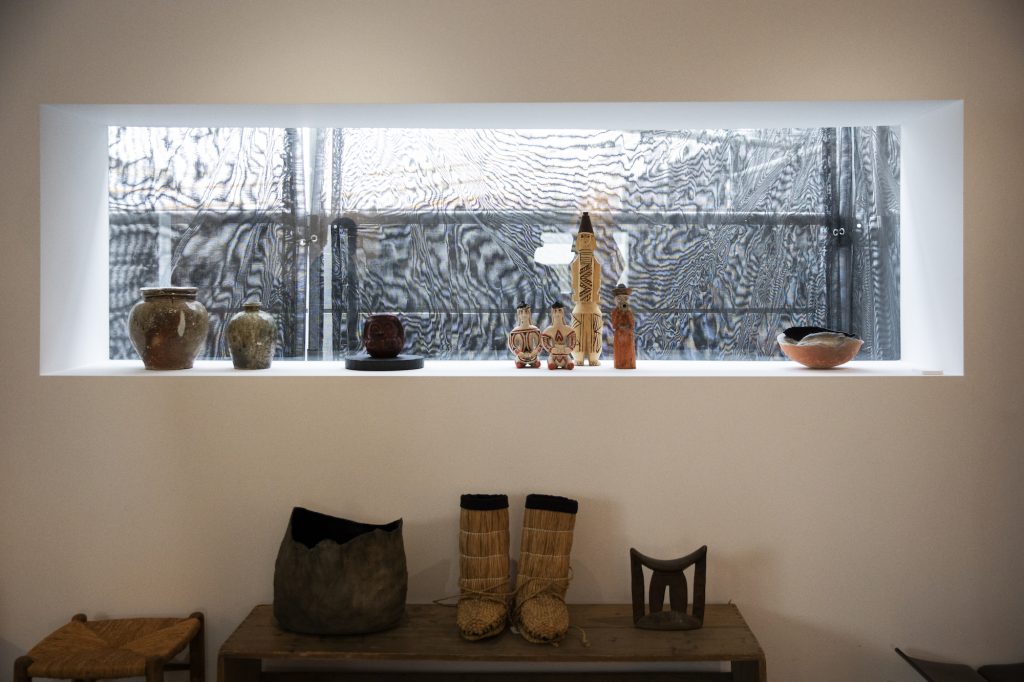
- Recently, there has been an increase in the number of people buying art from the Harajuku art scene and these crafts in Japan. How do you see this trend?
Minami: People buy things that have a purpose at first. They buy things that can be used in everyday life, such as cups and plates. But as they use these things more and more, they start to realise that they are not just for use. It's not about the use of the object, it's more about the emotional aspect, such as how good it feels to have it there, or how good it is to look at it every day. People seek other "uses" for things. And this way they don't get bored of it.
- It's a change from ‘use of beauty' to ‘beauty of use.
Minami: Exactly. The buyer also finds the use of the item, so if they realise that, they can see and buy things more freely, and I think art and other things exist beyond that. I like clothing, but I want people to realise that too, which is why I run a gallery and such.
- So there is an enlightening aspect to it.
Minami: I didn't realise such things when I was young, but I've come to understand it as I've experienced many different things. Young people who come to a shop like Graphpaper to buy clothes can also have the opportunity to see such things at Gallery Hakushi. I think young people can’t afford to buy arts and crafts that cost hundreds of thousands or millions of yen, but our clothes are not cheap for them either. So it's like saying, 'You can buy this cup for 7,000 yen'. It's nice to wear nice clothes and be popular, but there is a different kind of value.
- The last question I want to ask in this interview is that when we spoke a few years ago, I remember you said that you wanted to eventually open a hotel. Has that goal changed since then?
Minami: It hasn't changed at all, it's the ultimate form of what I want to do since I was in my 20s. I think a hotel is the ultimate in food, clothing, shelter and service, so I hope one day I can make that happen.

- Is there anything you are currently working towards that goal?
Minami: A lot is going on, but we recently made a new office in Kyoto and have just finally done the interior there. I wanted to make it a space that can be used as a showroom, for business meetings and for me and my staff to stay over, so if you just look at the interiors there, you can't even tell what kind of space it is (laughs). Also, I recently found a new space in Kyoto again, so I’ve got another project I'm thinking about there.
- There are a lot of projects going on in Kyoto and the western part of Japan.
Minami: Indeed. There are many production districts for clothing, and there are also many things that are more convenient being outside of Tokyo. I don't think it's necessary to stick to Tokyo at all.

Takayuki Minami
Born in 1976. After joining H.P.FRANCE in 1996, he was involved in the launch of a multi-label store CANNABIS and other projects. In 2008, he became independent to start alpha, and also worked as an outsourced director at 1LDK. In 2012, he founded alpha.co.ltd. Since then, the company has not only been involved in the PR business and shop direction for various Japanese and international brands, but also in brand consulting, space design and event organisation, and has been running Graphpaper, a multi-label store and brand, and FreshServide.
[Editor’s note]
I have had opportunities to interview and talk to Minami-san from time to time. As mentioned at the beginning of the first part, he is a truly multifaceted person, and as the years have passed, his work has continued to expand in many directions and his achievements have continued to build. This interview was aimed to introduce Minami Takayuki to those who might be wondering, "I've heard a lot about him recently, but what kind of person is he really?”. In fact, he is so multifaceted that six angles do not even fully cover him. However, there is something about him that is clear and straightforward. I would be grateful if that can convey that through this article. (Takei)